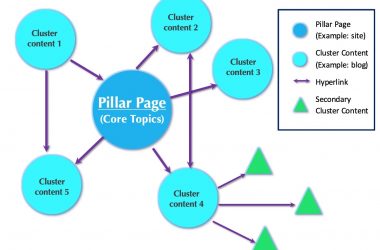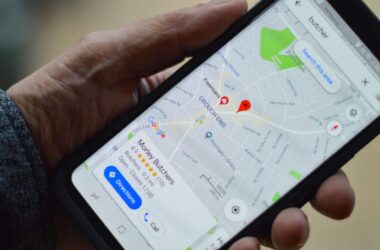The fundamentals
There’s no doubt that digital marketing in this day and age is dispersed with more devices, browsers and users than ever. As a result, deciding which attribution model to implement is an inevitable challenge. The the process of tracing the journey of a consumer through the sales cycle is an increasingly complex task. It’s often difficult to understand which marketing channel should be assigned credit for a new sale and hence the topic of attribution modelling is indeed a multifaceted area of study. In this digital age, and certainly a hot-topic of conversation at SEO Sydney, a conversion for a business can be developed through multiple channels ranging from Facebook and Google ads all the way to an email campaign.
The multidimensional nature of a modern day online consumer
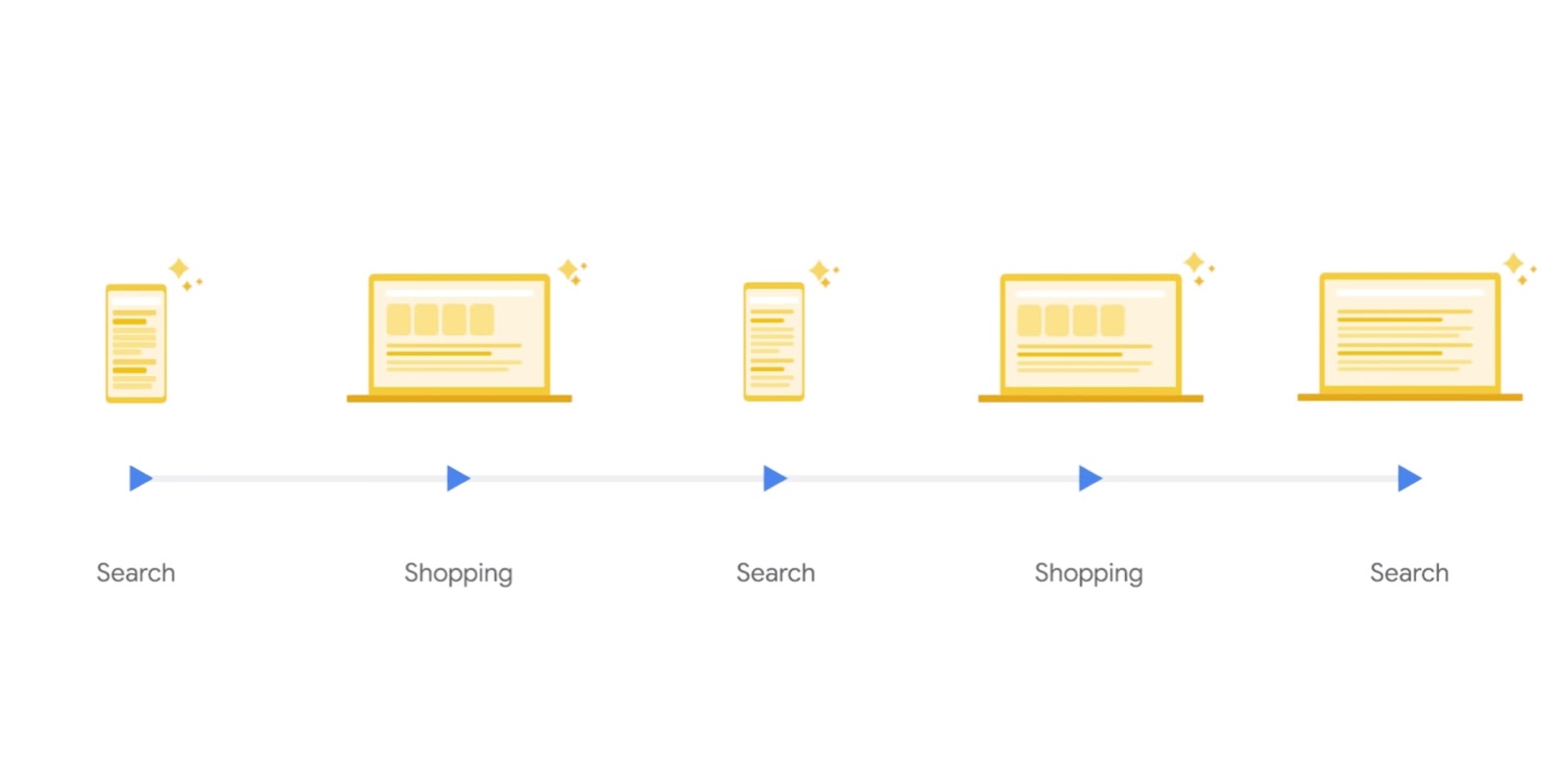
Image source: Google Ads Tutorial
Customers are exposed to a complex network of valuable information which influences their purchasing decision. As a business, it’s essential to understand which campaigns are working and which ones aren’t so one can tailor their digital strategy to optimise conversions. As a result, various types of frameworks have been developed to analyse how interrelated ad campaigns contribute towards a conversion for a business. Through evaluating these models, you can form a tailored digital strategy which leverages your most compelling marketing channels!
Understanding the 6 key attribution models
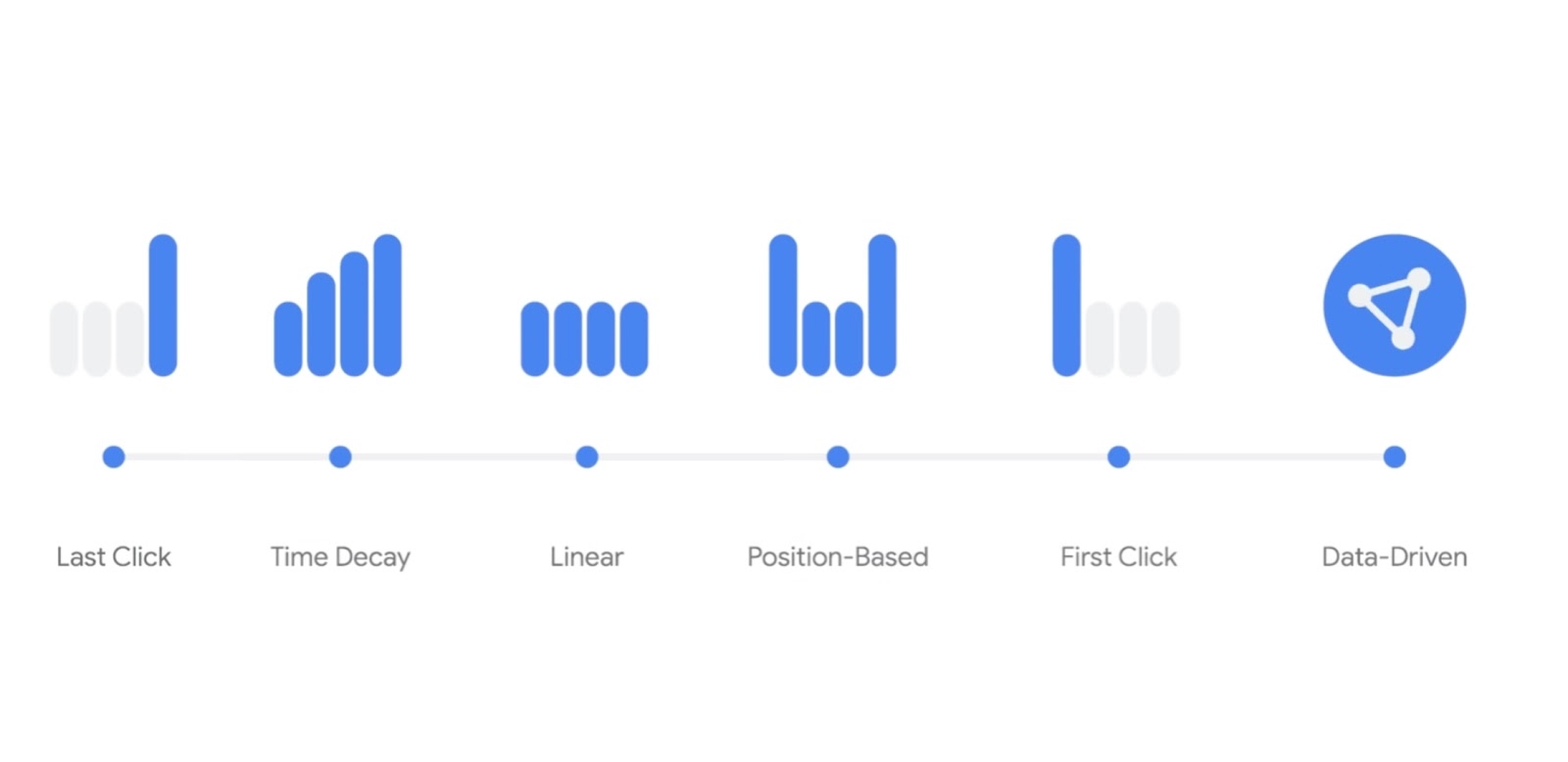
Image source: Google Ads Tutorial
Single Level Attribution Models
Last Interaction models
Firstly, the Last interaction model, as the name suggests, is a framework where all the credit is assigned to the last touch point. It’s efficient and typically the most accurate as it won’t fall into the trap of misattributing an inefficient marketing channel. It particularly works best if you have a short buying cycle and is based on the fundamental logic that only campaigns that directly lead to conversions should be recognised. The model is suited towards businesses that have consider conversions to be the primary motive. Indeed, the final touchpoint is likely to give a compelling indication of how efficient a business’s website is as this the point which directly contributes to revenue.
Potential limitations of the Last Interaction model
However, the limitation of this model is that it doesn’t go beyond the final interaction to analyse the journey of the consumer in their initial phases. If your business has campaigns with various advertisers, this model will fail to recognise potentially valuable channels which have contributed towards a sale.
Perhaps a more commonly used model is the Last Indirect interaction model. This is the default model used in Google analytics as it suits the needs of a diverse range of businesses. Essentially, it assigns credit to the last touchpoint that isn’t directly on the website where the purchase is made. Revealing the campaign that prompts indirect traffic to finally reach to your website and convert is indeed an insightful and intuitive method of attributing credit. However, as with the first model discussed, it only considers one touchpoint whilst completely ignoring the other touch points.
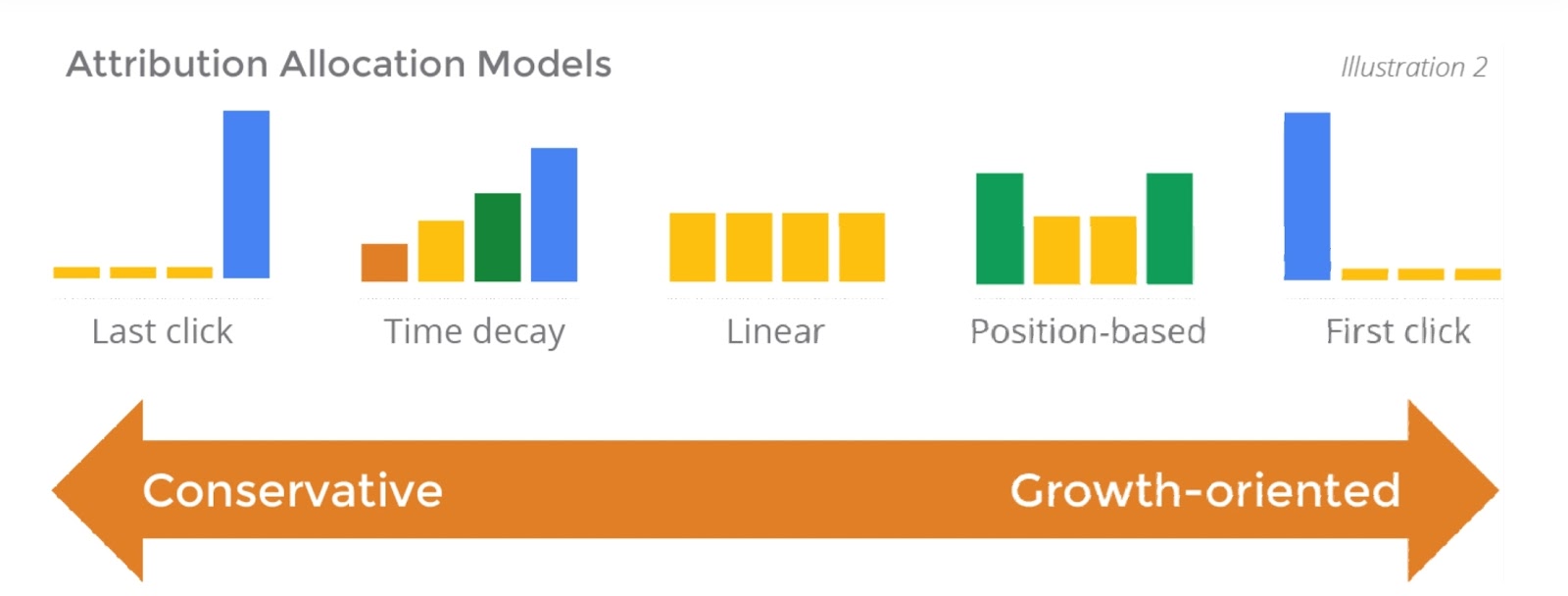
Image source: The Medium
Understanding what suits the needs of your business
As seen above, the image depicts the dynamic relationship between a business’s marketing strategy and various attribution models. If you want to be conservative as a business with regards to evaluating successful channels, Last click attribution models will be useful however overly simplistic. Businesses entering into the e-commerce space for the first time aiming to initially explore marketing channels will find this useful. For example, if your business is simply looking to drive more conversions through digital marketing, you may not need to look any further than these 2 models. However, generally in a B2B sales environment, there are far too many channels prior to a conversion and hence this model isn’t widely used without comparing to other models.
First Interaction Model
In contrast to the Last Attribution models, the First interaction attribution model allocates 100% of the credit to the first click. The model is again simplistic and it ignores the effect of crucial marketing channels after this first point. It’s recommended for businesses trying to evaluate a particular channel or for growth orientated businesses trying to generate leads to qualify as many new potential customers. If you are an emerging large brand, a potential small business or even a high growth start up, this model can reveal insightful data about what channels are instigating the most leads. Furthermore, it can again be useful for businesses with simplistic campaigns where the initial campaign is designed to create a conversion immediately. The three models above attribute all the value of a single channel and do not recognise the contribution of any others, essentially only revealing part of the story.
Conclusions of Single point attribution models
In summary, these models are simplistic and reveal the strength of individual channels however the remaining models offer a more balanced approached through providing the ability to assign credit to all the marketing channels in the cycle. If we take the example of the online travel industry or more generally, any business with a complex product or service where their target customer is likely to have to take time to decide about a product, an attribution model that monitors every step is required. Another important factor to consider is the competitiveness level of the industry you are operating in. The higher the level of competitiveness would certainly require a greater amount of attention to detail when following a customers journey through their keyword searches.
Case Studies: Analysing the impact the right model can have on ROI!
We can follow the conversion journey of Expedia, a leading travel company with one of the most successful digital marketing campaigns in this industry over the last few years. Expedia utilises a multitude of marketing channels including organic search, social referrals, direct type-ins and paid channels such as Adwords. We can broadly categorise these into paid traffic and social media however it’s clear that the attribution models discussed so far are inadequate to analyse such a complex industry.
Multi-attribution models
Hence, this leads us into multi-attribution models. Starting with the Linear attribution, this model assigns conversion credit evenly across all channels accessed by the consumer. Usually, half the credit is given to a channel a step prior to the current channel and so on. This model provides a more holistic approach to attribution modelling, balancing the various channels in a linear manner. Moreover, its simple to set up as there’s no decision making required in terms of attribution as channels are evenly valued. It can not only serve as a powerful benchmark as its simple to set up but it reveals that each channel may be adding value towards a campaign.
Taking the case of Expedia again, a 2017 marketing campaign, “Find your spontaneity” was designed to boost their mobile bookings. Whilst the campaign involved many television advertisements, there were also many mobile advertisements on applications such as Shazam as well a paid search advertisements on web browsers. As stated by Expedia’s marketing director, all these channels were designed to work in harmony to prompt consumers to download the application. In such a broad marketing campaign, the linear attribution model is a powerful tool to begin to evaluate the success of the marketing tools being implemented.
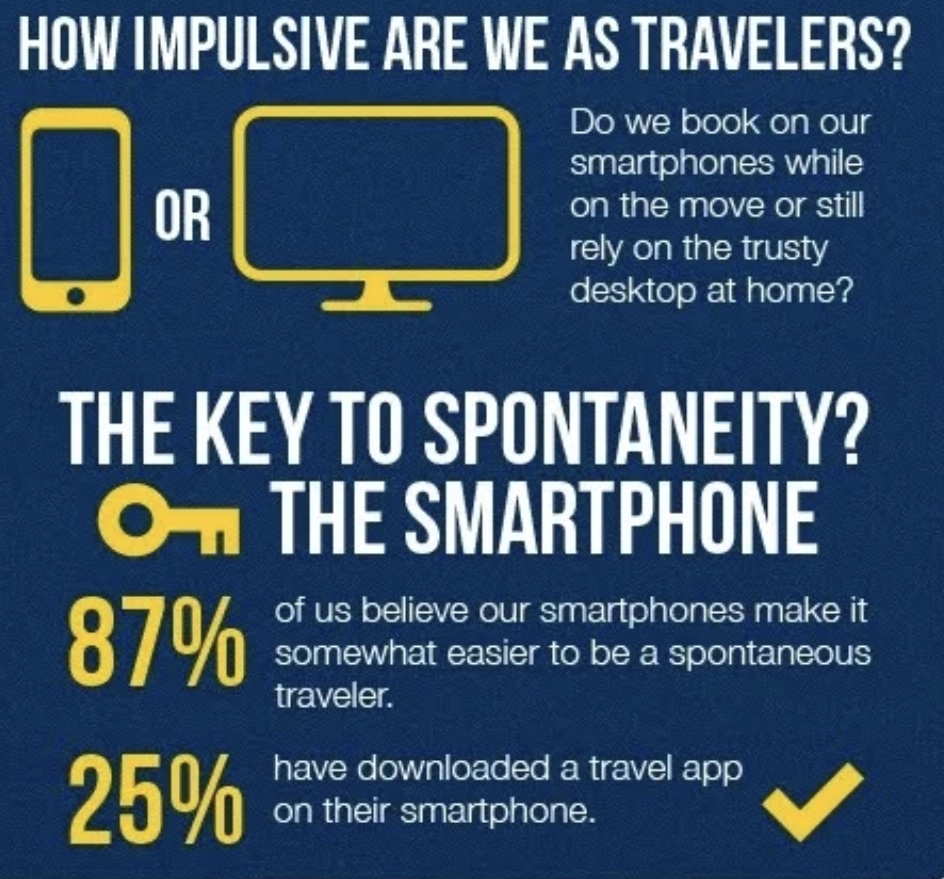
This display advertisement is one of many used within the campaign to highlight to consumers that downloading the application is a must
Source: Expedia.com
Limitations of the linear attribution model
The model is limited with regards to distinguishing between various touch points to highlight which ones are outperforming others. In an attempt to solve this issue, the Time decay attribution moves into a more complex space where more recent channels are attributed more credit than initial channels. Typically, half the credit is given to a channel a step before and essentially, touch points towards the end of a sales cycle are incrementally more valuable.
It’s suitable for a business with a complex and long sales cycle where relationship building forms the crux. This is due to the fact that the direct channels, such as emailing are inevitably at the end of the sales process will be allocated more credit in comparison to a paid advertisement campaign for example. Businesses where the conversion involves signing up to a paid subscription and involves a high level of inquiries such a SAAS company will indeed benefit from this model.
One may argue that this model understates the importance of initial touch points as they are often what instigates the development of a consumer interest in a service or product. Therefore, one must delve into the particular sales cycle to determine whether such a model is providing justice to touch points such as initial webinars that may be extremely influential yet occur early on in the sales cycle.
The impact of more complex attribution models
Finally, Position based attribution is the most complicated model discussed so far as it combines the First and Last interaction models. This model is suited towards businesses which value channels that initiate interest as well as the final channel that resulted in the sale. However credit can still be assigned to channels in between but the two most important touch points are recognised- What generated a customers interest and what closed the sale for the business. These two touchpoints are assigned 40% each whilst the remaining touch points are assigned a total of 20%.
Google analytics also offers a data-driven analytics model once your account reaches 15000 searches and 600 conversions. Through the use of AI, past data is used to analyse the path of each conversion. This is indeed a powerful tool that must be utilized in Google analytics.
Success stories!
Walks of Italy
Indeed, we can unfold the example of Walks of Italy, an online tourism company who benefited incredibly through migrating from the Last Click attribution model to a Data Driven Attribution model. Through utilising Google Search Ads 360, the company was able to decompose the types of searches being made, thereby gaining a stronger understanding of which particular searches didn’t lead to sales. As a result, a stronger framework was developed to measure the impact of each search campaign. According to the Marketing manager of Walks of Italy, the transition to this attribution model established a greater level of confidence in valuing each campaign, particularly highlighting which ad groups were being undervalued. Although setting up a custom DDA attribution model is a complex procedure which required a marketing agency, the data generated instigated the company to change its ad bidding strategy to high volume, generic keywords.
Consequently, in contrasting the summer on summer performance of Walk in Italy, a 33% increase in revenue was noticed as well as a 25% increase in ROI. Source: Google Ads. There’s no doubt that analysing the search patterns through machine learning for this tourist company certainly provided them leverage in their peak sales quarter for the year.
Hangikredi.com
Furthermore, another prominent example of a business implementing this Data driven attribution model is the success story of Hangikredi.com- an online service for providing comparisons of financial products such as home loans. Through moving from a single point attribution model where the business only analysed credit card conversions, the DDA model generated data through following the intricate journey of customers who lead to conversions and contrasted this to pathways which were unsuccessful.
As a result of this, the formative stages of the customer journey, which was previously undervalued, received appropriate credit. The marketing team in Hangicredi.com certainly adopted the results of this into their Ad words PPC bidding strategy, claimed it broadened their perspective of keyword searches. In fact, the changes resulted in over 50% increase in conversion volume and as a result, the business is hoping to implement DDA attribution across many more product divisions.
For more information in regards to bidding strategies for PPC visit: Getting the most SEO bang for your PPC bid.
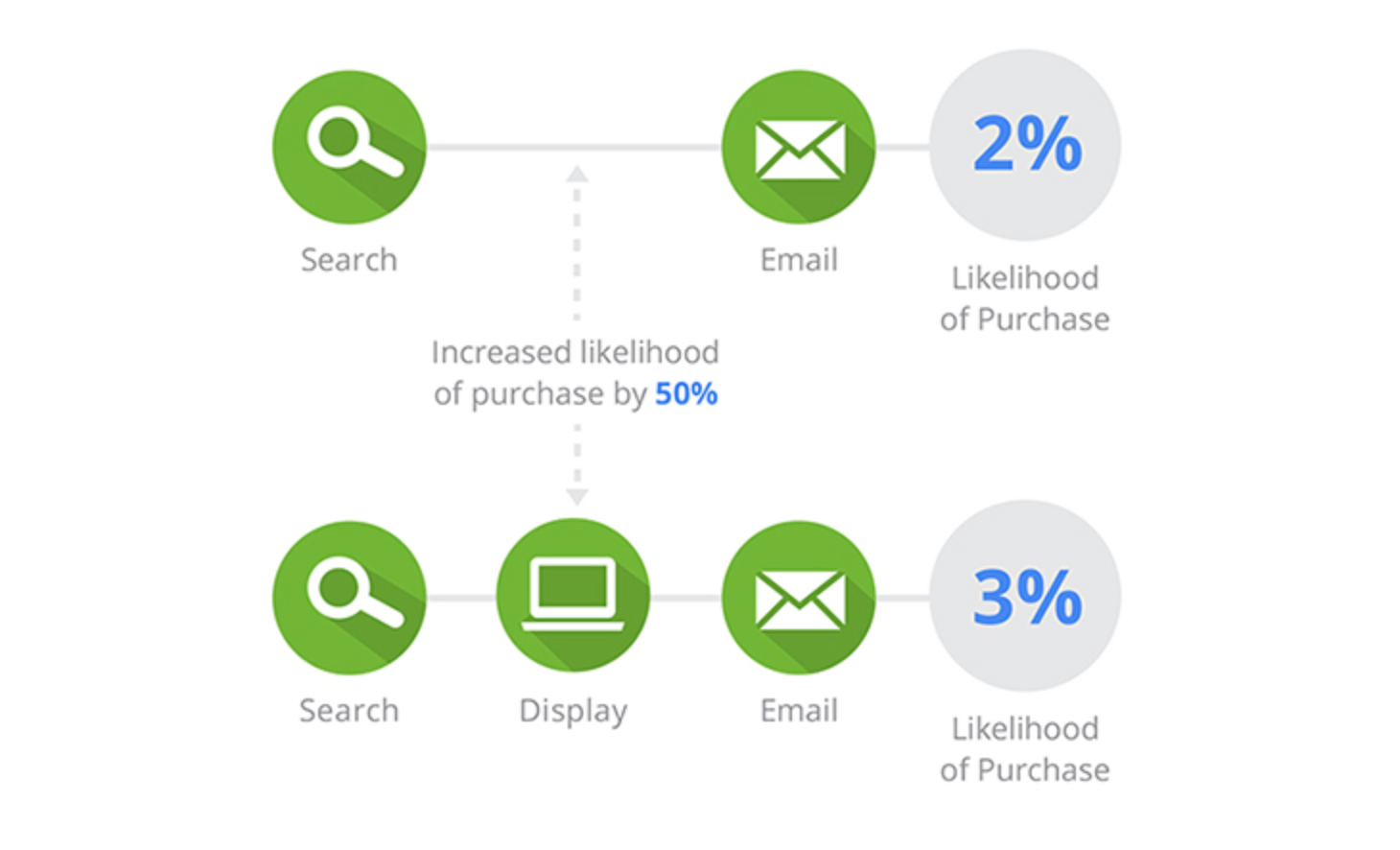
The data-driven model uses conversion probabilities to assign credit. The image above reveals that by adding display to the path of a sale, the probability of conversion increases by 50% Source: Google Ads tutorial
What should I do now?
In essence, Attribution modelling is a complex and evolving area in digital marketing and the reality is that there is no clear cut method to use. Whilst some models such as the Last interaction are too simplistic, others offer an incredible amount of detail. In a B2B sales environment, a multi touch model is certainly more appropriate. Broad marketing campaigns for companies such as Expedia would certainly require an incredible amount of analysis of a customers journey to sustain a success over long periods of time. With almost a 1 million downloads a month today, there’s no doubt the “Find your spontaneity” campaign was a successful one.
On a final note, The time-decay models and even algorithmic Data-driven models may reveal insightful data however businesses must consider the time and costs associated with analysing such data. The case studies above certainly reveal that investing an data driven attribution model certainly is an investment worth making if your primary source of revenue is through online search and ppc advertisements. Overall, discovering the most suitable attribution model is definitely a process of experimentation but one which certainly worth investing in!
If you want to explore more SEO-related content, check out SEO Sydney – the experts in all things SEO
